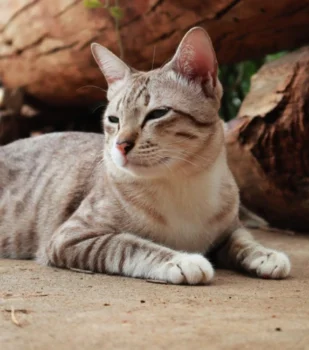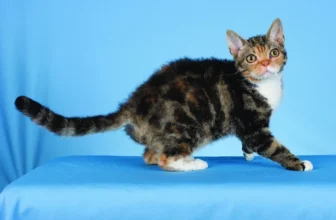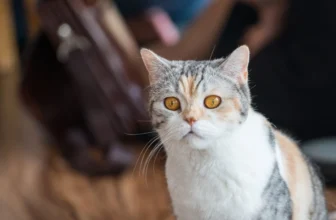As feline companions becoming increasingly popular pets, cat lovers are continuously seeking unique breeds with fascinating origins and personalities. One breed that stands out is the American Wirehair, a distinct feline that descends from American Shorthairs and barn cats. However, this may raise questions about how these ancestor breeds contributed to their development, and what differentiates them. Additionally, as cat owners, it’s essential to learn how to take care of your feline companion’s grooming, exercise, diet, and health needs. In this article, we’ll explore in detail the history, appearance, personality, and care needs of American Shorthairs, barn cats, and American Wirehairs. We’ll also address common questions about these breeds, aiming to help you choose the perfect feline companion for you, and ensure the happiness and well-being of your beloved pet.
American Shorthairs

With their distinctive looks and friendly personalities, it’s no wonder the American Shorthair breed has been a beloved companion for Americans since the country’s early days. Originally bred as working cats to help control rodent populations on farms and in homes, American Shorthairs have since become a popular choice for families and cat lovers alike. Let’s take a closer look at the appearance, history, and personality of this breed, and how it contributed to the development of the American Wirehair.
Appearance and Traits
The American Wirehair shares many physical characteristics with its ancestor breeds, the American Shorthair and the barn cat. The American Shorthair is a medium-to-large cat breed with a muscular build and a short, dense coat. They come in many colors and patterns, including tabby, solid, bi-colored, and calico. American Shorthairs have a round head and wide-set, rounded eyes that are usually gold or copper in color. They have a sweet and easy-going personality, and are known for being loyal and adaptable companions.
On the other hand, barn cats are not a specific breed but rather a subset of cats that have adapted to living in outdoor environments. They can come in a variety of shapes, sizes, and colors, and often have longer fur to protect them from the elements. Barn cats are independent and self-sufficient, with a natural hunting instinct that makes them great at catching rodents and other pests.
The American Wirehair inherits some of these physical traits from its ancestor breeds, but also has its own unique features. As the name suggests, the American Wirehair has a coat that is wiry and springy to the touch, with a texture similar to that of a steel wool pad. This is due to a genetic mutation that occurred in the breed’s early development. The coat comes in a variety of colors and patterns, including black, white, brown, and tabby. The American Wirehair also has a round head and large, expressive eyes that can be any color.
In terms of personality, the American Wirehair is known for being affectionate and playful, with a curious and adventurous nature. They are often described as loyal and social, and enjoy spending time with their human families. The American Wirehair is also recognized for its hunting abilities, with a strong prey drive and excellent stalking skills.
The American Wirehair’s appearance and traits are influenced by its ancestor breeds, the American Shorthair and barn cats, but it also has its own unique characteristics, such as its wiry coat and playful personality. If you want to learn more about the American Wirehair’s origins, including the impact of genetic mutations on the breed’s development, check out our article on Exploring Genetic Mutations in American Wirehair Breeds.
History and Origins
American Shorthairs
American Shorthairs are one of the oldest cat breeds in America, with roots tracing back to the colonial era. They descended from the cats that emigrated with early settlers from Europe to North America and were used for pest control on ships and farms.
In the early 1900s, breeders started refining the breed and created a standard for the American Shorthair’s appearance and characteristics. Today, American Shorthairs are popular pets due to their hardy nature, playful personalities, and distinctive tabby patterns.
Barn Cats
Barn cats are not a specific breed, but rather cats that have adapted to living and working on farms. They are often feral or semi-feral and are valued for their rodent-catching abilities.
Barn cats have been a part of American agriculture since the first settlers arrived. They are descended from the domesticated cats that were brought over to North America from Europe, as well as from the cats that were already living in the wild.
How They Contributed to American Wirehair’s Development
American Wirehairs have an interesting history, as they are the result of a spontaneous genetic mutation that occurred in a litter of barn cats in upstate New York in the 1960s.
One of these kittens was discovered by a local cat breeder, Joan O’Shea, who was intrigued by its unique wiry coat. She bred the kitten with an American Shorthair, which contributed to the breed’s strong, sturdy build and friendly personality.
Over the next few decades, breeders worked to establish the American Wirehair as a distinct breed, using American Shorthairs and other cats with similar physical traits to strengthen the breed’s traits and increase its genetic diversity.
Similarities and Differences between American Wirehairs, American Shorthairs, and Barn Cats
While American Wirehairs, American Shorthairs, and barn cats all share common ancestry, they have significant differences in appearance, personality, and behavior.
American Wirehairs are known for their unique coat texture, which is wiry and crimped, while American Shorthairs have a smooth, dense coat. Barn cats, on the other hand, are often shorthaired with no specific coat texture.
In terms of personality, American Wirehairs are generally friendly and playful, while American Shorthairs are known for being confident and independent. Barn cats, due to their feral origins, tend to be more aloof and wary of humans.
As for behavior, American Wirehairs and American Shorthairs are both known to be good hunters. However, barn cats have the strongest rodent-catching abilities due to their natural instincts and outdoor lifestyle.
Nutrition and Diet for American Wirehairs, American Shorthairs, and Barn Cats
Nutrition is an important aspect of cat care for all breeds, including American Wirehairs, American Shorthairs, and barn cats. Each breed may have different dietary requirements based on their activity level, age, and health status.
American Wirehairs and American Shorthairs are both medium-sized cats and will need a balanced diet that includes high-quality protein, carbohydrates, and fats. Barn cats may require a higher calorie intake to support their active lifestyle and may need a diet that includes more protein.
It’s essential to consult with a veterinarian to determine the appropriate diet for your feline companion and to provide them with fresh, clean water at all times.
To learn more about the history and development of the American Wirehair as a breed, check out our article on American Wirehair Origins.
Personality
American Shorthairs have a laid-back personality, making them an ideal companion for families with children. They are tolerant of being handled and can adapt well to new environments, making them great options for first-time cat owners. They are affectionate and enjoy quality time with their human family, but they can also entertain themselves if left alone for short periods.
Barn cats, on the other hand, tend to be more independent and less socialized with humans. They are excellent mousers and have an innate ability to hunt and care for themselves. They may not be the best option for households with young children or those looking for a lap cat, but they can make great outdoor companions for farms or rural properties.
American Wirehairs, bred from American Shorthairs and barn cats, have inherited desirable traits from both ancestors. They are known for their friendly and affectionate nature, as well as their high activity levels. They love to play and explore their surroundings, often demanding attention from their owners.
Although they are active, American Wirehairs are not overly demanding and can adapt to different lifestyles. They are social cats and enjoy spending time with their human and feline companions. However, they can also be content with their own company, making them a great match for single-person households.
Personality traits between American Shorthairs, barn cats, and American Wirehairs may vary, but they are all wonderful feline companions in their own unique way.
(Source: american-wirehair-cat-name-significance)
Barn Cats
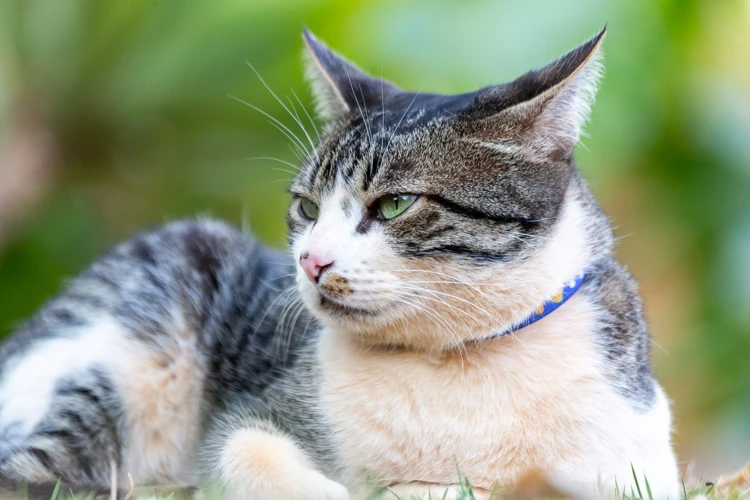
As we explore the ancestor breeds of American Wirehairs, we cannot overlook the significance of barn cats. These tough and independent felines are an important part of American history and have contributed to the development of several cat breeds, including the American Wirehair. Unlike house cats, barn cats are accustomed to living outdoors and have evolved to be excellent hunters. Let’s dig deeper into the fascinating appearance, traits, history, and personalities of barn cats and discover their role in the creation of this unique breed. To learn more about the history of American Wirehair, check out this article by Joan O’Shea.
Appearance and Traits
Appearance
American Shorthairs have a muscular and compact body with a round face. They typically weigh around 11 to 15 pounds and have medium-sized ears and eyes. Their coat is thick and comes in various colors and patterns, including tabby, calico, and solid colors like black, white, and gray. Their coat is easy to maintain and requires a weekly brushing.
Barn cats, on the other hand, have a lean and agile body that is ready for hunting. They come in various coat types, but often have a short and thick coat that is resistant to harsh weather. They have pointed ears and piercing eyes, which are characteristic of their wild ancestors. Barn cats have a self-maintaining coat that does not require much grooming.
Traits
American Shorthairs are known for their adaptability and great temperament. They are easygoing and get along well with children and other pets. They are also independent and can occupy themselves for hours. American Shorthairs are intelligent and can be trained to do simple tricks.
Barn cats are known for their hunting skills and their ability to survive in harsh environments. They are independent by nature and have a wild streak that can make them difficult to tame as house pets. However, if socialized early, barn cats can be loyal and affectionate companions. They are also great pest controllers and can help keep rodent populations under control.
Both American Shorthairs and barn cats have contributed to the development of the American Wirehair breed. The American Shorthair’s genes are responsible for the American Wirehair’s muscular body and thick coat. The barn cat’s genes have contributed to the American Wirehair’s hunting skills, agility, and independent nature.
If you want to learn more about the history and origins of the American Wirehair breed and its ancestor breeds, check out this article here.
History and Origins
American Shorthairs have a rich history that dates back to the arrival of European settlers in North America. These cats were brought over on ships to help control rat populations on board. Once they arrived in the New World, they served a similar purpose on land. These cats were highly valued for their hunting skills and quickly became popular with farmers and settlers.
Barn cats, on the other hand, have a more mysterious origin. It is believed that many barn cats are descendants of European domestic cats that were brought over to North America in the 18th and 19th centuries. They were likely brought over for the same reason that American Shorthairs were: to control rodent populations. Over time, these cats developed their own unique characteristics and became a distinct breed.
The development of the American Wirehair is closely tied to these two ancestor breeds . In 1966, a breeding program was started by Joan O’Shea, a cat lover from upstate New York. She discovered a male kitten with a wiry coat in a litter of barn cats. This kitten was bred with an American Shorthair female, and the resulting offspring had the wirehair gene.
Over the next few years, O’Shea and other breeders continued to breed American Shorthairs and barn cats with the wirehair gene. They also introduced other breeds, such as the British Shorthair and the Maine Coon, to the breeding program. By 1978, the American Wirehair was officially recognized as a distinct breed by the Cat Fanciers’ Association.
Today, American Wirehairs are bred primarily with other American Wirehairs to maintain the unique qualities of the breed. However, their development and background are closely tied to American Shorthairs and barn cats.
Sources:
- Joan O’Shea: The Woman Behind the American Wirehair
- The Breed Story of the American Wirehair Cat
- American Wirehair Cat Facts
- The Breeding Background of American Wirehairs
Personality
When it comes to personality, both the American Shorthair and the Barn Cat have their own unique traits and quirks that make them beloved feline companions. Here are some key personality characteristics to keep in mind:
American Shorthairs:
- Adaptable: American Shorthairs are known for being adaptable to different environments and lifestyles.
- Friendly: These cats are often friendly and sociable with their owners and may enjoy interacting with visitors as well.
- Calm: American Shorthairs have a generally calm demeanor and may not be as active or playful as other cat breeds.
- Independent: While they enjoy attention, American Shorthairs also value their independence and may not crave constant attention from their owners.
- Affectionate: Despite their independent streak, American Shorthairs can be affectionate and enjoy snuggles and lap time with their owners.
Barn Cats:
- Hardworking: Barn Cats were originally bred to be working cats on farms, and they still maintain their work ethic and determination.
- Clever: These cats are often very intelligent and good problem solvers, which makes them excellent at catching rodents and other pests.
- Cautious: Due to their natural instincts as hunter cats, Barn Cats are often cautious and may take time to warm up to new people or situations.
- Self-sufficient: Living on a farm or in a barn often means that a cat will need to fend for itself, so Barn Cats are often self-sufficient and can take care of their own needs.
- Fierce: While they may be affectionate towards their owners, Barn Cats are also known for their ferocity and determination in catching prey.
Keep in mind that not every cat will exhibit all of these traits, and individual personalities can vary greatly within breeds. It’s important to get to know your own cat and cater to their specific needs and personality quirks.
How They Contributed to American Wirehair’s Development

The American Wirehair is a unique breed that owes its development to the American Shorthair and barn cats. The American Shorthair was highly valued for its sturdy build, excellent hunting skills, and friendly disposition. Meanwhile, barn cats, also known as feral cats, were praised for their natural hardiness and resilience, as they were able to thrive in harsh conditions with limited human intervention.
The American Wirehair was first discovered in upstate New York in the 1960s. While its exact origins are unknown, it is believed that the breed was the result of a spontaneous genetic mutation in an American Shorthair litter. One of the kittens in the litter had a unique wiry coat that no other cat in the litter or surrounding area exhibited.
At first, the kitten was thought to be a one-off oddity. However, after breeding the kitten to another American Shorthair, the wiry coat trait was found to be hereditary. This inspired breeders to develop a new breed based on the unique trait, which eventually became the American Wirehair.
By selectively breeding American Shorthairs and barn cats with the wiry coat trait, breeders were able to develop a distinct breed that possessed the best traits of both ancestor breeds. The American Wirehair inherited its sturdy build and friendly disposition from the American Shorthair, as well as its wiry coat from barn cats.
Today, the American Wirehair has gained popularity and recognition as a unique and distinctive breed. Its wiry coat not only makes it stand out from other breeds but also contributes to its hardy and resilient nature, making it well-suited to various environments and climates.
The American Shorthair and barn cats played a significant role in the development of the American Wirehair. Their traits were carefully selected and bred for the creation of a new breed that would combine the best qualities of both ancestor breeds. Thanks to their contributions, we have a unique breed that has captured the hearts of many cat lovers worldwide.
Similarities and Differences between American Wirehairs, American Shorthairs, and Barn Cats

When it comes to comparing American Wirehairs, American Shorthairs, and Barn Cats, there are both similarities and differences to take note of. One similarity is that all three breeds are considered domesticated cats that are popular as household pets.
Appearance: American Wirehairs are known for their unique wiry coat, which sets them apart from both American Shorthairs and Barn Cats. American Shorthairs and Barn Cats both come in a variety of coat colors and patterns, but American Shorthairs usually have a short, sleek coat while Barn Cats may have a medium to long length coat.
Temperament: American Wirehairs, American Shorthairs, and Barn Cats all have individual temperaments, but as a whole, they are known to be independent and self-sufficient felines. American Shorthairs are generally easy-going and friendly, while Barn Cats may be more aloof and prefer to be outdoor cats. American Wirehairs are known for their intelligence and playful nature.
History: All three breeds have their own unique history and origins. American Shorthairs were initially bred in America as working cats to control rodent populations. Barn Cats, as the name suggests, are feral cats that live on farms and in rural areas. American Wirehairs are a relatively newer breed, with their development starting in the 1960s.
Health: American Wirehairs, American Shorthairs, and Barn Cats all have similar health concerns, such as obesity and dental issues. However, American Wirehairs may be more prone to skin allergies due to their unique coat. Regular veterinary check-ups and proper nutrition and exercise are necessary for all three breeds to maintain good health.
Care: American Wirehairs, American Shorthairs, and Barn Cats all require different levels of care when it comes to grooming and exercise. American Wirehairs require regular brushing to maintain their coat, while American Shorthairs and Barn Cats may need minimal grooming. Barn Cats may enjoy more exercise than American Wirehairs and American Shorthairs, as they are used to living outdoors.
Overall: While American Wirehairs, American Shorthairs, and Barn Cats have some differences, they are all beloved feline companions in their own way. Choosing the right breed for you and your lifestyle ultimately depends on your preferences and needs as a pet owner.
Grooming and Care for American Wirehairs, American Shorthairs, and Barn Cats
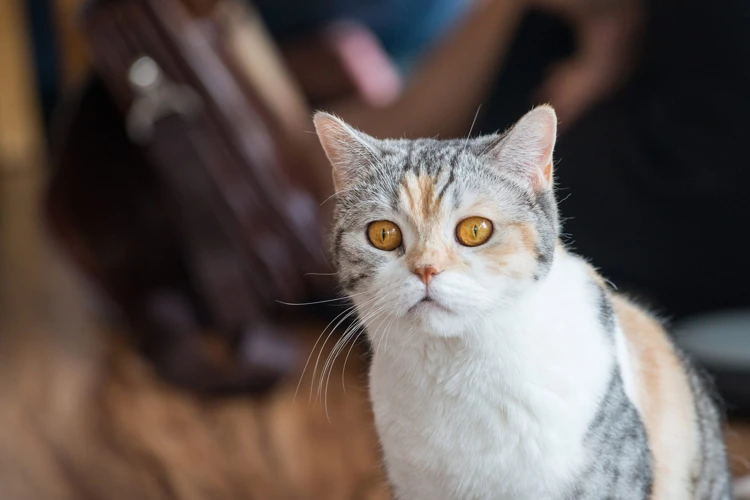
Grooming and Care for American Wirehairs, American Shorthairs, and Barn Cats
Grooming and care for American Wirehairs, American Shorthairs, and Barn Cats are essential tasks to keep your feline companions healthy, happy, and clean.
Grooming: Grooming your cats is an important part of their care routine. American Wirehairs have a short, dense coat that requires minimal grooming. Brushing once or twice a week will help to remove loose fur and prevent matting. American Shorthairs have a smooth, short coat that only requires occasional brushing to remove dead hair. Barn cats, on the other hand, may have long or short hair, which may require more frequent brushing to prevent matting.
Bathing: Cats generally do not require regular bathing as they are able to groom themselves. However, if your cat gets into something particularly dirty or sticky, a bath may be necessary. Use a cat-specific shampoo and be sure to rinse thoroughly to prevent any residue from irritating their skin.
Nail Care: Cats’ nails can grow quite long and may require trimming every few weeks. Use special cat nail clippers to avoid any accidental snips of the sensitive quicks inside the nail. If you are unsure how to trim your cat’s nails, consult with your veterinarian or a professional groomer.
Dental Care: Dental care is important for feline health. Brush your cat’s teeth regularly with a cat-specific toothbrush and toothpaste. Dental treats and toys designed to help clean teeth can also be beneficial. Regular dental check-ups with your veterinarian can help prevent dental problems.
Preventative Care: Regular vet visits should be part of your cat’s care routine to ensure they are up to date on vaccinations and preventative care. Flea and tick prevention is essential, as well as regular deworming. Keeping your cat indoors can also help prevent the spread of diseases and prevent accidents from outdoor hazards.
By following these simple grooming and care routines, you can help ensure your American Wirehairs, American Shorthairs, and Barn Cats stay healthy and happy for years to come.
Training and Socializing Your American Wirehairs, American Shorthairs, and Barn Cats
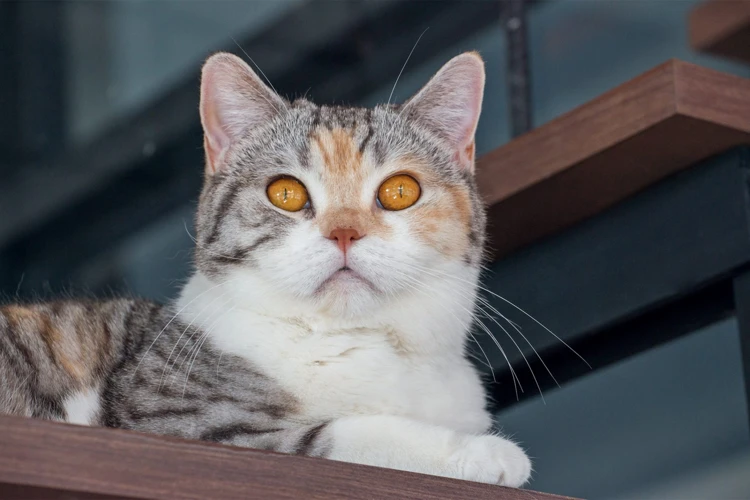
Training and Socializing Your Feline Companions
Training and socializing your feline companion is essential for their well-being and happiness. While some breeds, like dogs, are more trainable, cats can also learn a variety of commands and behaviors with patience and consistent training.
Training American Wirehairs, American Shorthairs, and Barn Cats
When training your American Wirehair, American Shorthair, or Barn Cat, it’s important to start with basic commands, such as “come” and “stay,” using positive reinforcement techniques. Rewarding your feline companion with treats and affection when they follow commands will encourage them to repeat the behavior in the future.
It’s also important to expose your feline companion to a variety of experiences and environments during their critical socialization period, which is between 2 to 7 weeks of age. This will help them become well-adjusted adult cats who are comfortable with different people, animals, and situations.
Socializing American Wirehairs, American Shorthairs, and Barn Cats
Socializing your American Wirehair, American Shorthair, or Barn Cat is crucial for their mental and emotional health. Cats are social creatures and thrive when they have opportunities to interact with humans and other animals.
One way to socialize your feline companion is to play with them regularly using interactive toys, such as feather wands and laser pointers. This will not only provide them with mental stimulation but will also strengthen the bond between you and your cat.
Providing your feline companion with a scratching post and other toys will also help with their socialization and prevent destructive behavior. Additionally, allowing them to perch in high places and providing hiding places for them to retreat to will help them feel safe and secure in their environment.
Final Thoughts
Training and socializing your American Wirehair, American Shorthair, or Barn Cat can be a rewarding experience for both you and your feline companion. With consistent training and socialization, your cat will become a well-adjusted and happy member of your family. Remember to always use positive reinforcement techniques and expose your cat to a variety of experiences and environments to help them thrive.
Common Health Issues and How to Prevent Them
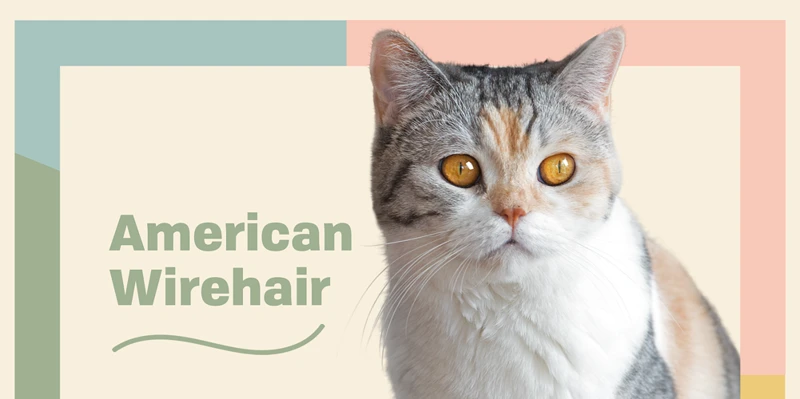
Maintaining your feline companion’s health is crucial to ensuring they live a long, happy life. American Wirehairs, American Shorthairs, and Barn Cats are all known for being generally healthy breeds, but there are still a few common health issues to be aware of.
Obesity: As with any cat breed, American Wirehairs, American Shorthairs, and Barn Cats are at risk for obesity if they are not fed a healthy diet and do not get enough exercise. This can lead to a range of health issues, including diabetes, joint problems, and heart disease. To prevent obesity, ensure that your feline companion is fed a balanced diet and has opportunities for exercise and playtime.
Dental Issues: American Wirehairs, American Shorthairs, and Barn Cats are all at risk for dental issues, such as gingivitis and periodontal disease. These conditions are caused by a buildup of plaque and tartar on the teeth, which can lead to tooth loss and other health complications. To prevent dental issues, regularly brush your feline companion’s teeth and provide them with dental chews or toys.
Urinary Tract Infections: All three breeds are also prone to developing urinary tract infections, which can be caused by stress, dehydration, or a buildup of bacteria in the urinary tract. Symptoms of a urinary tract infection may include frequent urination, straining to urinate, and blood in the urine. To prevent this issue, ensure that your cat has access to clean water at all times and maintain good litter box hygiene.
Parasites: American Wirehairs, American Shorthairs, and Barn Cats are all at risk for a range of parasites, including fleas, ticks, and ear mites. These parasites can cause discomfort, itching, and even infect your feline companion with diseases. To prevent parasitic infestations, use flea and tick preventatives and keep your cat’s ears clean.
To ensure that your feline companion stays healthy and happy, it is important to schedule regular check-ups with your veterinarian. This can help catch potential health issues before they become serious problems and ensure that your cat is receiving the proper care and attention they need.
Nutrition and Diet for American Wirehairs, American Shorthairs, and Barn Cats
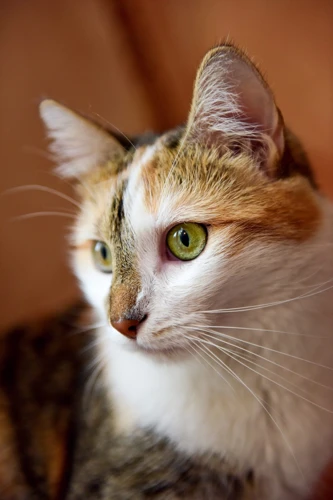
Proper nutrition is essential for good health for all feline companions, including American Wirehairs, American Shorthairs, and Barn Cats. It is important to provide them with the right balance of protein, fats, vitamins, and minerals to maintain a healthy weight, immune system, and overall well-being.
When choosing food for your feline companion, it is important to pick a brand that uses high-quality ingredients and has the right balance of nutrients for their specific life stage. For kittens, it is important to choose food that is high in protein and fat to support their growth and development. Adult cats need less protein and fat, but still require a good balance of nutrients to maintain their health.
When it comes to feeding, it is best to feed your feline companion small, frequent meals throughout the day, rather than one or two large meals. This will help prevent overeating and obesity. Provide your feline companion with clean, fresh water at all times, and consider using a water fountain to encourage them to drink more water.
For American Wirehairs, American Shorthairs, and Barn Cats that spend time outdoors, it is important to be cautious of their diet. Outdoor cats may hunt for their own food, and it is important to monitor their intake to prevent overeating or the consumption of unsafe prey. It is also important to monitor their weight and adjust their diet accordingly, as outdoor cats tend to be more active and may require more calories.
When choosing treats for your feline companion, make sure to pick a brand that uses high-quality ingredients. Treats should be given sparingly, as they can contribute to obesity and other health issues.
Ultimately, each feline companion is unique, and their dietary needs may vary. Consult with your veterinarian to determine the best diet and feeding schedule for your American Wirehair, American Shorthair, or Barn Cat. With proper nutrition and care, your feline companion can live a healthy and happy life.
Choosing Your Feline Companion: American Wirehairs, American Shorthairs, or Barn Cats?
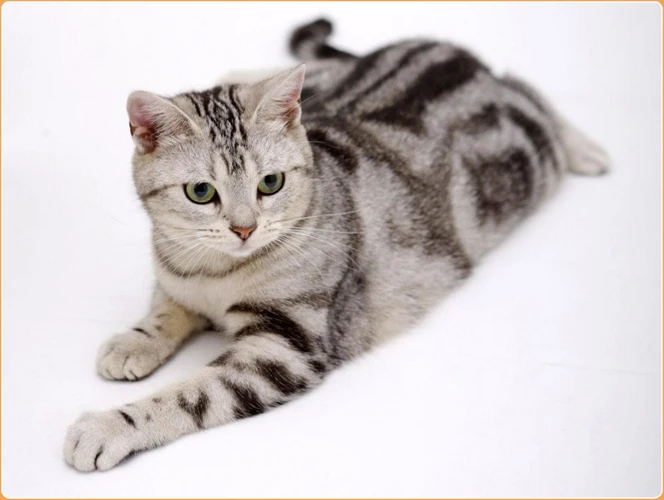
When it comes to choosing a feline companion, it can be a tough decision as there are so many different breeds to choose from. In this article, we have explored the ancestor breeds of American Wirehairs, namely American Shorthairs and barn cats. All three breeds have their unique characteristics and traits that make them great companions for their owners.
American Wirehairs: If you are looking for a unique feline companion with a distinctive coat, then American Wirehairs might be the perfect match for you. These cats have a wiry and crimped coat that is not found in any other breed. They are also known for their affectionate and playful personality, making them great companions for families with children or other pets. American Wirehairs are very intelligent and can be easily trained to perform tricks or even walk on a leash.
American Shorthairs: For those who are looking for a more traditional-looking cat, American Shorthairs might be a great choice. These cats have a thick and shiny coat, and they come in a variety of colors and patterns. They are also known for their calm and easy-going nature, making them great companions for those who want a low-maintenance pet. American Shorthairs are intelligent and can be trained, but they don’t require as much attention and stimulation as other breeds.
Barn Cats: Barn cats are not a specific breed, but rather a group of cats that have adapted to living in outdoor environments. They are known for being independent and self-sufficient, making them great for those who want a pet that doesn’t require much attention. Barn cats can have a variety of coat types and colors, but they are typically thinner than other breeds and have a more rugged appearance.
When deciding which breed of cat to adopt, there are a few factors to consider. Firstly, you should consider your lifestyle and living situation. If you live in a small apartment, then a low-energy breed like an American Shorthair might be a better fit than an active American Wirehair. If you have other pets or children, then a friendly breed like the American Wirehair might be a great choice.
Another factor to consider is the amount of time and attention you can give to your cat. If you have a busy schedule, then a low-maintenance breed like the American Shorthair or a barn cat might be a better fit. However, if you have plenty of time to devote to your pet and want a more interactive companion, then an American Wirehair might be the best choice.
Choosing the right feline companion depends on your individual preferences and lifestyle. All three breeds we have explored in this article have their unique characteristics and make great companions for the right owner. No matter which breed you choose, the most important thing is to provide a loving and caring home for your new feline friend.
FAQs About American Wirehairs, American Shorthairs, and Barn Cats
As you navigate the world of feline companionship, you may find yourself with many questions about American Wirehairs, American Shorthairs, and Barn Cats. It’s perfectly normal to feel perplexed and inquisitive about the unique characteristics and needs of each breed. To ease any confusion, we’ve compiled a list of frequently asked questions and expert answers to help you better understand these fascinating felines. From understanding their unique traits to caring for their health, we’ve got you covered with all the information you need to make an informed decision about which breed is right for you. So, let’s dive in!
What makes American Wirehairs unique from American Shorthairs and barn cats?
When it comes to feline breeds, it’s important to understand the unique characteristics that set them apart. American Wirehairs have several distinctive traits that differentiate them from American Shorthairs and barn cats. Take a look at the comparison table below to see what sets American Wirehairs apart:
| American Wirehairs | American Shorthairs | Barn Cats | |
|---|---|---|---|
| Coat Texture | Coarse, dense, and wiry | Short and smooth | Varies greatly, from shorthaired to longhaired, and may be coarse or soft |
| Personality | Friendly and affectionate, with an energetic and playful spirit | Easygoing and adaptable, with a calm and quiet demeanor | Independent and self-sufficient, with natural hunting instincts |
| Appearance | Medium-sized with a muscular build and distinctive curly whiskers | Medium to large-sized with a sturdy and balanced build | Varies greatly, depending on the breed’s ancestors and the environment |
| Health Issues | Predisposed to hypertrophic cardiomyopathy (HCM) and hip dysplasia | Predisposed to certain genetic diseases, including HCM and obesity | May be susceptible to common feline health issues, including dental diseases and parasitic infections |
| Lifespan | Approximately 13-15 years | Approximately 12-15 years | Varies greatly, depending on the breed’s ancestors and the environment |
As you can see, American Wirehairs have a distinctive coat texture that is coarse and dense, with a wiry texture that sets them apart from other breeds. They are also known for their friendly and affectionate personalities, with an energetic and playful spirit that endears them to their owners. Additionally, American Wirehairs have curly whiskers that give them an unmistakable look.
In terms of health issues, American Wirehairs are predisposed to hypertrophic cardiomyopathy (HCM) and hip dysplasia. while American Shorthairs are prone to certain genetic diseases including HCM and obesity. Barn cats, on the other hand, may be susceptible to common feline health issues, such as dental diseases and parasitic infections.
When it comes to lifespan, American Wirehairs can be expected to live approximately 13-15 years, while American Shorthairs and barn cats have similar lifespans of approximately 12-15 years.
The unique coat texture, friendly personality, and distinct physical features make American Wirehairs a standout breed, with several characteristics that set them apart from other feline breeds.
Do American Wirehairs, American Shorthairs, and barn cats get along with other pets?
How well do feline companions get along with other pets?
One of the most common concerns that pet owners have when considering a new feline roommate is how well their new pet will get along with their other animals. Luckily, American Wirehairs, American Shorthairs, and barn cats are known for being friendly and sociable creatures who can easily adapt to living with other pets.
To give you a better idea of their compatibility with other animals, check out the table below for a quick breakdown.
| Feline Companion | Compatibility with Dogs | Compatibility with Other Cats | Compatibility with Small Animals |
|---|---|---|---|
| American Wirehairs | Good | Good | Varies (may have high prey drive) |
| American Shorthairs | Good | Good | Varies (may have high prey drive) |
| Barn Cats | Good (may be more independent) | Varies (may be more territorial) | Varies (may have high prey drive) |
It’s important to note that each pet is an individual with their own temperament, and compatibility with other animals can vary depending on the specific personalities and experiences involved. However, in general, American Wirehairs, American Shorthairs, and barn cats are known for being fairly welcoming to other pets.
That being said, introducing a new pet to your household should always be done slowly and carefully to ensure the safety and comfort of everyone involved. Proper socialization techniques, like supervised interactions and positive reinforcements, can help to establish positive relationships between pets and prevent any unnecessary conflicts.
American Wirehairs, American Shorthairs, and barn cats can generally get along well with other pets with proper introduction and socialization techniques. Of course, it’s always a good idea to take your individual pet’s temperament into consideration before introducing them to new furry friends.
Do American Wirehairs, American Shorthairs, and barn cats need exercise?
Maintaining a healthy weight is essential for all felines, including American Wirehairs, American Shorthairs, and barn cats. Regular exercise is an essential part of achieving and maintaining a healthy weight. Exercising also provides many other benefits for feline companions, like improved mood, decreased stress, and decreased risk of certain health conditions.
The amount of exercise your feline companion needs will depend on factors such as their age, weight, activity level, and overall health condition. In general, most cats require at least 20-30 minutes of exercise every day to stay healthy and happy.
American Wirehairs Exercise Needs:
American Wirehairs are an active breed that enjoys playing with toys and exploring their environment. They require regular exercise to stay fit and healthy. Daily playtime sessions with interactive toys like laser pointers, teaser wands, and puzzle toys can help American Wirehairs meet their exercise needs.
American Shorthairs Exercise Needs:
American Shorthairs are a more laidback breed and may not be as energetic as the American Wirehairs. However, they still require regular exercise to stay healthy. Daily playtime sessions with toys, running up and down the stairs, or chasing after treats can help American Shorthairs stay in shape.
Barn Cats Exercise Needs:
Barn cats are known for their tremendous activity level and require plenty of exercise to stay healthy. Since they don’t live in a traditional indoor environment, barn cats can climb, jump, and run around their outdoor surroundings and engage in their natural behaviours. They also enjoy hunting rodents, which can provide an excellent form of exercise.
American Wirehairs, American Shorthairs, and barn cats all need regular exercise to maintain their health and wellbeing. Owners should ensure they provide their feline companions with daily opportunities to play, explore, and engage in their natural behaviours. Additionally, regular veterinary checkups can help identify any underlying health conditions and ensure your feline companion stays healthy and happy.
How often should I groom my feline companion?
Grooming your feline companion is an essential aspect of keeping them healthy and happy. It helps remove dead hair, distribute natural oils, and prevent hairballs and other skin issues. The frequency of grooming largely depends on their coat type and length. Here are some guidelines for how often you should groom your furry friend:
- Short-haired cats: American Shorthairs and Barn Cats both have short hair that requires minimal grooming. You can brush them once a week to remove dead hair and distribute oils.
- Long-haired cats: If you have an American Wirehair with long hair, it’s best to brush them daily or at least several times a week to prevent matting and tangling.
- Cats with special needs: If your feline companion is elderly, obese, or has health issues, they may require more frequent grooming to prevent matting and skin issues.
It’s also essential to trim their nails and clean their ears regularly. Nail trimming should be done every 10-14 days using a cat-specific nail clipper. Checking and cleaning their ears should be done every few weeks or as needed using a cotton ball soaked in ear cleaning solution.
In addition to regular grooming, it’s essential to watch out for any changes in their coat or skin. If you notice bald patches, excessive scratching, or lumps on their skin, it’s best to consult a veterinarian for an evaluation.
By following these grooming guidelines and keeping an eye on their overall health, you can ensure that your American Wirehair, American Shorthair, or Barn Cat companion is happy and healthy.
What should I feed my feline companion?
As responsible pet owners, we always want to make sure that our feline companions receive a well-balanced diet that caters to their unique nutritional needs. It’s important to note that cats are obligate carnivores, which means they require a diet that is high in protein, moderate in fats, and low in carbohydrates.
When choosing the best food for your American Wirehairs, American Shorthairs, or barn cats, you need to look for high-quality commercial cat food that contains all the essential nutrients that your feline companion needs to thrive. You can also opt for homemade diets, but it’s important to consult with a veterinary nutritionist to ensure that your cat’s diet is well-balanced.
The table below shows the essential nutrients that your feline companion needs and the recommended daily intake for each nutrient:
| Nutrient | Recommended Daily Intake |
|---|---|
| Protein | At least 26% of the calorie diet |
| Fat | At least 9% of the calorie diet |
| Carbohydrates | 3-10% of the calorie diet |
| Water | At least 60 ml/kg of body weight per day |
| Vitamins and Minerals | Varies depending on age, health, and activity level |
It’s also important to note that water is an essential nutrient for cats, and they need access to clean and fresh water at all times. You can provide water through a bowl or a cat fountain.
When choosing cat food, make sure to read the ingredient label carefully and avoid food that contains fillers, artificial preservatives, and added sugars. High-quality cat food should contain whole food sources of protein, such as chicken, beef, or fish, and essential amino acids, vitamins, and minerals.
Lastly, it’s important to consult with your veterinarian to determine the best type of food and feeding schedule for your feline companion based on their age, health, and activity level. By providing a well-balanced and nutritious diet, you can ensure that your feline companion stays healthy and happy.
Conclusion
After exploring the ancestor breeds of American Wirehairs, namely American Shorthairs and Barn Cats, it’s clear that these feline companions have had a significant impact on the development of the American Wirehair breed. Each breed brings something unique to the table, whether it be the Barn Cat’s independent nature or the American Shorthair’s adaptability to different environments.
When it comes to grooming and care, all three breeds require regular attention to maintain their health and happiness. This includes regular grooming to prevent matting and monitoring their diets to ensure they receive proper nutrition.
Training and socializing these cats is also important for their overall well-being and to ensure they get along with other pets in the household. While American Wirehairs may require more patience and persistence in training due to their independent nature, all three breeds can learn and thrive with positive reinforcement.
When it comes to choosing the right breed for you, it ultimately depends on your lifestyle and preferences. Are you looking for a more independent feline companion or one that is more adaptable to different environments? Do you have other pets in the household that your new cat will need to get along with? These are all important factors to consider.
In conclusion, American Wirehairs, American Shorthairs, and Barn Cats are all unique and wonderful feline companions with their own set of traits and characteristics. By understanding their origins, personalities, and care needs, you’ll be better equipped to choose the right cat for you and provide them with the love and care they deserve.
Frequently Asked Questions
What distinguishes American Wirehairs from American Shorthairs and barn cats?
American Wirehairs are distinguished by their unique wiry and crimped fur, which is different from the short fur of American Shorthairs and barn cats. They also have a more playful and active demeanor compared to the relaxed Barn cats and the calm American Shorthairs.
Can American Wirehairs, American Shorthairs, and barn cats coexist in one household with other pets?
Yes, with proper introduction and socialization, American Wirehairs, American Shorthairs, and barn cats can coexist in a household with other pets. However, each pet has their unique temperament, and supervision may be necessary, especially during the introductory phase.
Do American Wirehairs, American Shorthairs, and barn cats require exercise?
Yes, regular exercise is essential for maintaining the health and well-being of American Wirehairs, American Shorthairs, and barn cats. Engaging your feline companion in playtime activities will not only help them burn off excess energy but also keep them mentally stimulated.
The grooming frequency of your feline companion depends on their breed and fur type. American Wirehairs should be groomed at least twice a week to keep their wiry coat in good condition. American Shorthairs and barn cats, on the other hand, may only require grooming once a week.
The nutritional needs of your feline companion depend on their age, size, breed, and activity level. It is recommended to feed them high-quality cat food that contains a balanced ratio of protein, fats, and carbohydrates. You can also consult your veterinarian to determine the best diet plan for your feline friend.
What are some common health issues that affect American Wirehairs, American Shorthairs, and barn cats?
Common health issues that affect American Wirehairs, American Shorthairs, and barn cats include urinary tract infections, dental problems, obesity, and diabetes. Regular veterinary check-ups can help detect any underlying health conditions early on.
How did barn cats contribute to the development of American Wirehairs?
Barn cats, also known as working cats, contributed to the development of American Wirehairs by mating with domestic shorthairs, creating a new breed with unique wiry fur. They also passed on their hunting instincts to American Wirehairs.
How should I train and socialize my feline companion?
Effective training and socialization of your feline companion involve positive reinforcement techniques such as rewards and verbal praise. Socializing your feline companion to new environments and situations can also help prevent anxiety or aggression towards strangers or other pets.
What are some grooming and care tips for American Shorthairs?
Regular brushing, nail trimming, and dental cleaning are essential grooming practices for American Shorthairs. This breed is also prone to obesity, so it is crucial to maintain a healthy diet and provide sufficient exercise for them.
How did American Shorthairs contribute to the development of American Wirehairs?
American Shorthairs contributed to the development of American Wirehairs by mating with barn cats and passing on their strong and muscular body frames, making American Wirehairs excellent hunters and athletic companions.

